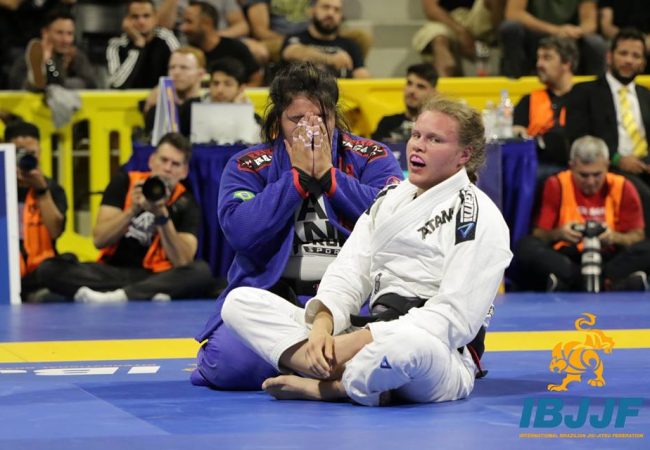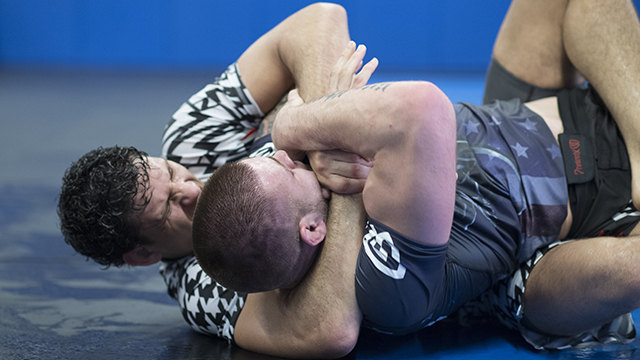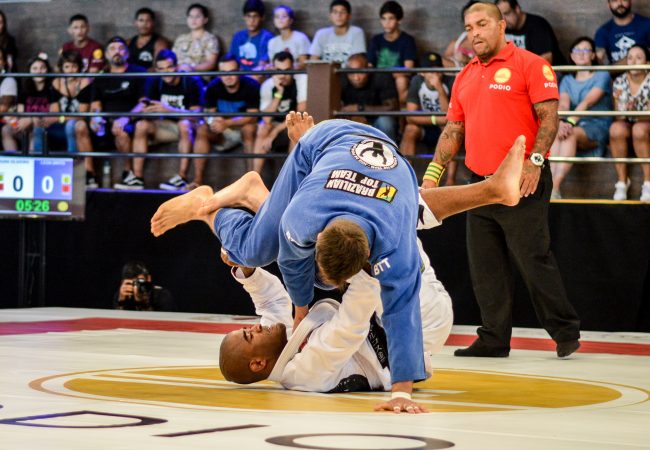In nickname, “Capoeira.” On the ground, high-quality BJJ. That is Elizeu Zaleski dos Santos, 32, who hasn’t lost in the UFC since 2015 and has been furiously chasing the limelight in the under-77kg division.
Last weekend at UFC Wichita, in Kansas, Elizeu Capoeira (21w, 5l) submitted a tough Curtis Millender in round 1 after a beautiful takedown followed by a hand-to-hand choke from the back.
The owner of an exciting striking style, Elizeu is a black-belt BJJ student under Cristiano Marcello, the leader of CM System, from whom he learned some interesting details he often uses in the Octagon. Find out what we learned from the fighter in the interview below.
GRACIEMAG: Curtis Millender was also undefeated since 2015, and yet you made it look easy. What was the plan going in?
ELIZEU CAPOEIRA: Our strategy was to draw his attention on the stand-up side, and as soon as he created an opportunity, some space, I would move to take the fight to the ground, to work with my jiu-jitsu. We practiced a lot of these ground situations, and I am certain my quick-shifting game confused him on the ground. He kind of didn’t know what to do. And that was also part of the strategy — to bring a volume of ground game to force him to try to remap the situation he was in. When an opponent is late to try to perform the defenses, it becomes easier for the guy attacking. And that was how I was able to seek the finish.
There was a detail of you slapping his arm to adjust the choke. Was that a technique you had looked at?
Yes, it’s a transition I learned from my teacher Cristiano Marcello. It’s an adjustment we always make starting from the seatbelt technique, either when the opponent is on all fours or turning with his back on the mat. It’s really a day-to-day position, a very basic one from our training, so it just ended up coming out automatically. It’s worth pointing out that the part of the fight that was on the ground happened close to my corner, so I even got to receive instructions in real time from the team, which helped even more!
What is your plan in the UFC at the moment — to face a top-five fighter?
I’m hoping for a ranked fighter, is all. I’ve requested multiple athletes, to no avail, so the goal right now is to be ready and await the next call. My biggest goal is to make exciting fights and give my best to the audience. My work speaks for itself.
Tell us a little about your journey.
I started out as a kid in capoeira, at 9 — it was my first martial art. I migrated to MMA at 19 and fought for the first time at 21. I began doing BJJ around the same time I started fighting MMA. I didn’t take it too seriously at that time — I was training just for the MMA. Only later did I intensify my focus and start competing in the gi as well.
Is capoeira coupled with BJJ a perfect formula for a fighter, in your opinion?
I feel it is. Capoeira gave me much of the elasticity, flexibility and agility I have today, and a lot of that I can use in BJJ. It becomes easy to practice another sport with the mobility of capoeira as a base. And capoeira also greatly influences my jiu-jitsu game, especially in the matter of versatility, an essential aspect for doing well in BJJ.






